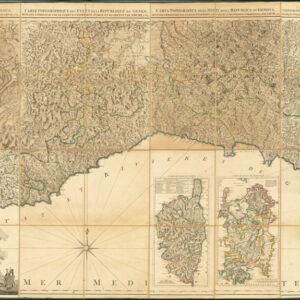Italian Anti-Communist Poster protesting the Soviet invasion of Afghanistan and the arrest of peace activist and nuclear physicist, Andrey Sakharov.
Contro La Repressione e L’Imperialismo del Comunismo Sovietico.
$750
1 in stock
Description
When the Soviet Union invaded Afghanistan on Christmas Eve of 1979, it sent a shockwave through western societies. The invasion was essentially an attempt by the Soviets to bolster the Afghani communists after they had seized power in a bloody coup d’etat, known as the Saur Revolution, in April 1978. The international community was quick to condemn these acts of war, even boycotting the 1980 Olympics in Moscow en masse. The subsequent internal power struggles, especially with religious groups, showed that national resistance against communism would be equally fierce. By instigating a full military invasion, Soviet leaders thought they could ensure that Afghanistan remained permanently under the aegis of communism. They were, of course, sorely mistaken.
The Italian political party Democrazia Cristiana produced this poster as a general cry of opposition against the Soviet invasion. The event that seems to have prompted its creation was the arrest and imprisonment of nuclear physicist and peace advocate Andrey Sakharov in 1980. Sakharov was a Russian dissident and human rights activist. He was also the leading physicist in charge of developing thermonuclear weapons, not to mention the mind behind RDS-37: the Soviet Union’s hydrogen bomb. Sakharov’s persistent critique of the state’s repression of its citizens and the hawks’ insistence on continually escalating Cold War confrontations earned him quite a reputation. The West loved him, awarding Sakharov the Nobel Peace Prize in 1975, but the KGB were not fans, labeling him the most dangerous of ‘domestic enemies.’
Because of his fame and his crucial contribution to the Soviet military capacity, Sakharov’s public dissent was, to a degree, tolerated back home. But when he became one of the most outspoken domestic critics of the Afghan invasion, it became too much for the KGB, who had him arrested and exiled to the closed city of Gorky (Nizhny Novgorod). Sakharov repeatedly went on hunger strikes, prompting the communist polit bureau to force-feed him. It was only in 1986 that Gorbatjov allowed Sakharov and his wife to return to Moscow.
In this manner, Sakharov became a poster boy for the peace movement, and his contemplative profile is seen in the lower half of the poster. Behind him is a pixelated outline of the Soviet Union, printed in deep black on an orange background. At the bottom of the map, we find Afghanistan depicted in dark red, while a curving bright red arrow pointing towards it from the Soviet interior represents the recent invasion.
Context is Everything
The Italian political party Democrazia Cristiana designed and published this poster. Its most famous member was Prime Minister Aldo Moro, who ruled Italy from November 1974 to July 1976. During the late 1970s, Moro was secretary of the Christian Democratic Party. In 1978, he was kidnapped by the far-left terrorist group The Red Brigades, who murdered him after 55 days of captivity. With Moro’s death, a power vacuum arose within the party, but at the same time, it was also buoyed by popular sentiment and support in the wake of this calamity.
Even though the Democrazia Cristiana would eventually collapse under a slur of corruption scandals that uncovered extensive corruption and even Mafia involvement, the general economic stagnation that characterized the early 1980s was also an essential factor in the party’s demise. At the time this poster was produced, however, the Christian Democrats were still a leading voice in Italian politics and, by proxy, in the global contest between liberal democracy and various forms of state socialism. It was, in other words, entirely in line with their role in Italian politics to reject the communist invasion of Afghanistan in such an explicit manner as this poster does.
Ultimately, this poster is not just a testimony to the many proxy battles fought as part of the Cold War but also a genuinely Italian manifestation of political grandstanding. The colors are vivid, and the subject matter is emotionally and idealistically engaging. It is a product of one of the most tumultuous periods in Italian political history – which is saying a lot!
Cartographer(s):
The Democrazia Cristiana was one of the dominant political parties in Italy following the end of the Second World War.
Condition Description
Manuscript marker annotations on verso with minor see-through. Text on the verso advertises an event to be held in a local Villa San Lucia library. Tear in lower left, repaired with plain white paper. Minor tape stains around edges.
References




![[Map of Steamship Routes and the Railways and Post Roads of the Russian Empire]](https://neatlinemaps.com/wp-content/uploads/2020/04/NL-00827_Thumbnail-300x300.jpg)
![[Map of Steamship Routes and the Railways and Post Roads of the Russian Empire]](https://neatlinemaps.com/wp-content/uploads/2020/04/NL-00827-scaled.jpg)
![[Map of Steamship Routes and the Railways and Post Roads of the Russian Empire]](https://neatlinemaps.com/wp-content/uploads/2020/04/NL-00827-scaled-300x300.jpg)